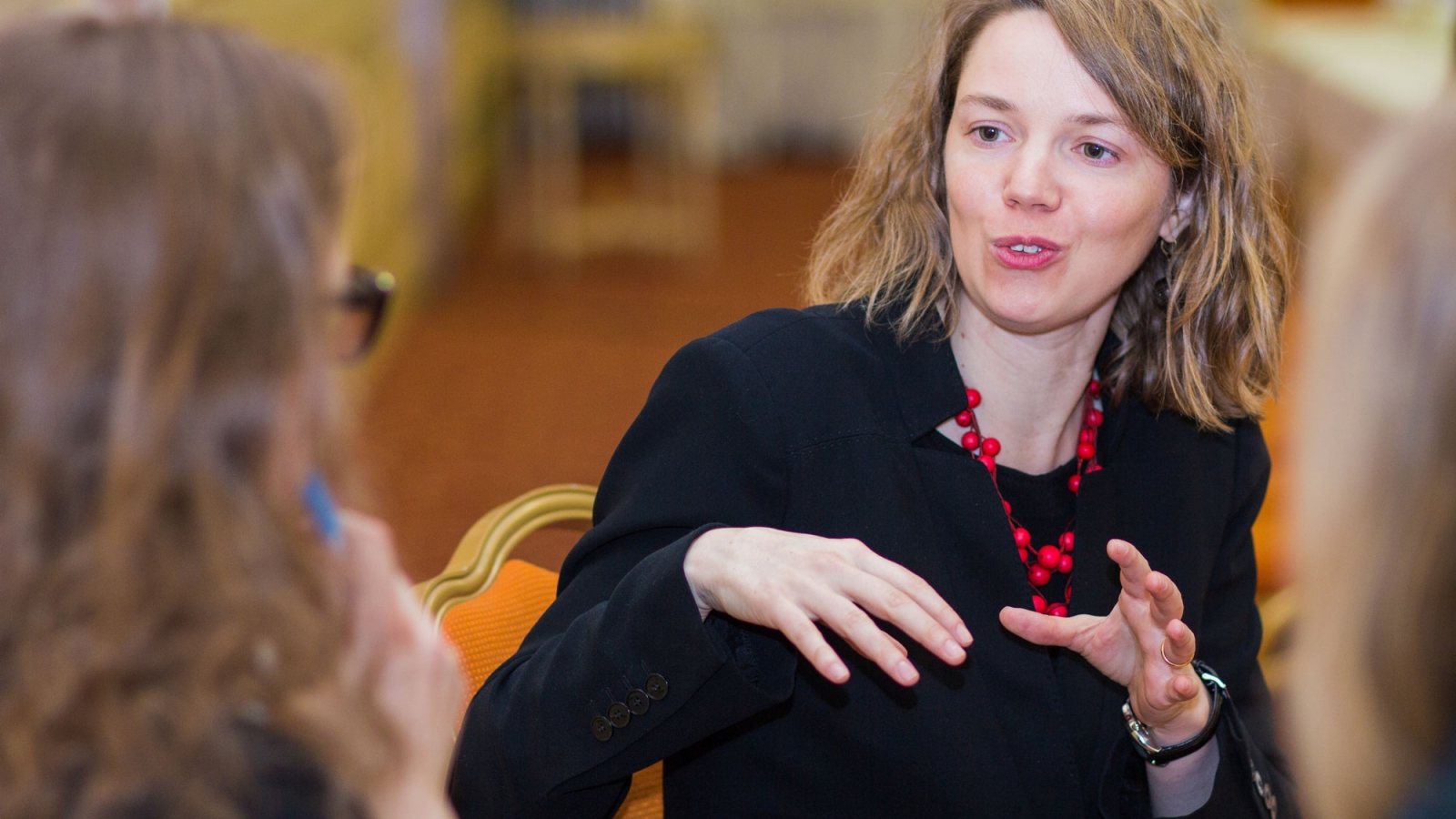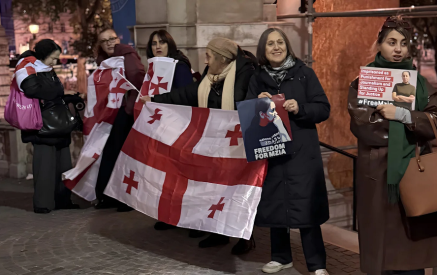Interview with IEA experts Claire Morel and Talya Vatman – EU4Energy Data Workshop
Endless queues of cars and people with gas canisters in front of gasoline stations – that’s a well-known scene from the US of 1973, the peak of the oil crisis when the members of the Organization of Arab Petroleum Exporting Countries proclaimed an oil embargo against the nations supporting Israel in the Yom Kippur War. The next year, the International Energy Agency (IEA) was founded, focusing at the time on energy security, namely the security of oil supplies. The IEA set up the statistics department focused on the collection of monthly data and asked member-countries to hold 90-day net import oil stocks. The role of the statistical department was to check whether the countries have this oil stock, and to collect data to assess the situation of the oil market. The data was essential for the monitoring of oil supply and to be aware of any upcoming shortages.
On 12-16 March, as part of the EU4Energy project, the IEA held a training week in Odesa, bringing together statisticians and representatives of the ministries dealing with energy-related issues. It included a workshop by JODI (Joint Organisations Data Initiative), a global initiative on energy data transparency. The training focused on discussing ways to improve the quality of data on energy production and consumption in the participant countries, and the role of monthly statistics in supporting national energy security policies. The Ukrainian Weekspoke to Claire Morel, Statistics Programme Manager at the IEA for EU4Energy, and Talya Vatman, Policy Programme Manager at the IEA for EU4Energy, about the quality of energy statistics in Ukraine, a new platform that’s being designed to present energy data for policymakers, investors and other stakeholders, and the way in which statistics affects national energy policies.
One of the focuses of EU4Energy project is on improving the quality of energy statistics in the countries you’re working with. Why this focus on data?
Talya Vatman: EU4Energy is a four-year €21 million EU-funded programme. The IEA manages three of the components, including data and policy components, and the web portal. The portal should be in very good shape and running by June. The goal is to improve evidence-based policymaking in the region. Ukraine is a key country in this region, and we really see that there is room for policymaking with a strong base of quality data.
Therefore, our focus is on statistics and policy, and on how the two meet. Good policy is impossible without good statistics. And we are trying to improve both at the same time. That’s why we have statisticians and policymakers in the room at each of our events. We wanted to provide a training for statisticians, as well as establish contacts between statisticians and officials in the ministries dealing with energy, in each of our 11 focus countries. These include the six Eastern Partner countries – Ukraine, Georgia, the Republic of Moldova, Belarus, Armenia and Azerbaijan – and five Central Asian countries which are Kazakhstan, Uzbekistan, Turkmenistan, Kyrgyzstan and Tajikistan.
After these people come to the policy forums, debate and see the best practices, ideally they go back and use that knowledge to see how they can improve their policies. Also, they build ties with the data analysts they can call up for statistics. We focus on getting many people together so that the relationship isn’t lost if a person leaves their job.
Claire Morel: You can’t make any informed decisions or design robust energy policies without looking at numbers or knowing the current situation in the country. Statistics can help model and test different scenarios for the future, and figure out the best option for your country. If you don’t have the right data, then it’s like playing roulette. Therefore, the EU4Energy programme focuses on building evidence-based policies. There is a very strong interest in Ukraine and other focus countries for us to share our knowledge with them. Also, statisticians understand the importance of data – we’ve been working for many years on this aspect with them.
Ukraine has made tremendous progress in the recent years. The Statistics Service of Ukraine produced its first energy balance statistics following the recommendations of international standards in 2012, and has been producing such statistics every year ever since. As a data user, you can now find data on where energy is consumed in the country, compiled in line with international standards, from 2007 through 2016. This is very important for designing any energy policy, or for planning for possible disruptions.
As part of the EU4Energy programme you are working on a portal for energy data that will cover the focus countries. What will it look like and when do you expect it to be ready?
T. V.: We are in the process of designing what will be a reference portal where anyone in the world can go if they want to understand the energy situation in the 11 focus countries. We hope that this will be a format that other parts of the International Energy Agency can learn from. We will have data visualization by countries and sections. The portal will also allow users to compare the energy situation between countries within the region.
C. M.: As specialists in energy data, we can design visualizations that are relevant for the users on the portal that’s being developed. This is one of the things we try to teach statistical agencies through our seminars: how to make their data, which tends to be very technical, attractive and understandable for the users.
This an infographic produced by the EU4Energy programme on the energy situation in Ukraine, using the data provided by the State Statistical Service to the IEA. It shows very basic facts that are unknown to the general public. Ukraine is a very large consumer of energy. The pie chart shows the energy mix of Ukraine. Compared to other countries in the region, Ukraine’s energy supply is well diversified.
The vertical bar chart shows the self-sufficiency of Ukraine by fuel. The blue bars represent the consumption of energy by fuel. The yellow bar represents the amounts that are produced domestically. Whenever there is a gap, it means the country needs to import to fulfil its energy needs. If you look at the graph, you will of course see the current energy security issue, the gap between the consumption of gas and coal and the domestic production. You will also observe a very large gap between oil consumption and domestic production. And this is something people usually don’t see. The country is heavily reliant on imports of oil products. These products are used in transport. This means transport and energy security issues are interconnected, and this is one of the topics for our transport forum.
The horizontal bar shows the final consumers of energy in Ukraine, by fuel. The largest final energy-consuming sector is industry. The residential sector consumes the most natural gas. When it comes to oil, most of the consumption is in transport.
T. V.: We are also looking into how Ukraine can change its transport sector so that it does not rely as much on oil, and achieves more self-sufficiency. There are two ways of accomplishing this self-sufficiency: by building many more refineries, or by moving away from policies that led to the current oil consumption levels in the first place. Hence, part of our training focuses on efficient transport in cities – we had representatives from the Lviv municipal authorities at the latest workshop – as well as on a national level.
Where do you see the most room for improvements in energy data quality for Ukraine?
C.M.: There are three focuses on the energy policy: energy security, long-term energy strategy, and energy efficiency. Energy efficiency indicators are the newest field in energy statistics, developed by the member countries of the Organisation for Economic Co-operation and Development. This is the field in which Ukraine will need to invest.
In Ukraine, we know now how much energy is consumed in total by households. We don’t know how exactly households consume this energy, such as how much energy is used for heating, lighting, cooking etc. Ukraine will have to move towards this new field in energy efficiency statistics and collect detailed information on the use of energy by households. This is the information for which specialists need to design strong energy efficiency policies.
What about industrial consumption?
C.M.: It’s easier to track energy consumption in the industry because most of the required energy statistics are already collected as part of regular annual data collection. There is less data available on households. For transport, the data might be there but it is scattered across different institutions.
You plan discussions on energy security via international platforms. Energy security of EaP countries relies on the EU’s energy policies, among other things. Will these discussions have a two-way impact on energy policies in the focus countries and the EU? Or, do you just aim to influence policies in the focus countries?
T. V.: EU4Energy is an EU-funded programme concentrated on focus countries. We’ve designed this programme to make sure that they have a chance to listen, to learn, and to get practical advice from each other and other OECD and IEA states that we sometimes involve as speakers. So, it’s not about influencing, but about getting the right people in the room and getting them to listen and to say that “we could actually have these kinds of energy policies in our country”. Many of these policies are not necessarily so difficult to implement if there is the political will to do it. It’s about getting them to learn and seeing what they can do using quality data.
How can comprehensive energy data contribute to attracting investors to the focus countries?
T. V.: What I have understood from the investment community during my career is that they want the best possible data. If it’s transparent and they can trust it, it’s going to help in their decision-making. The feedback that we’ve received is that the more we can do to improve the quality and consistency of data, and to provide more data points, the more of that they can fit into their modelling. They can also see consistency in the countries they look at, so that helps them make decisions too.
Can you list any stories from countries similar to Ukraine – with energy-consuming industry and households, and a similar climate – that have succeeded in improving their energy efficiency?
T. V.: I think Canada is an interesting story. It’s also a heavily industrialized economy, and a country with residential heating issues. Between 2005 and 2015, its energy demand grew by around 2%, while its energy intensity fell by around 20%. A lot of that is due to energy efficiency policies and measures. In industry, it was a mix of energy efficiency and some process innovation. For households, there were a lot of policies and measures implemented at both the federal and provincial levels. These included a mix of financial incentives, a new model building code that helped guide commercial and residential construction. It will never be one measure or policy that does it, but a mix. And it has to be done on a national and regional level, in industry as well as the residential sector. These things need to work together, and then you start seeing improvements.
What would be the sectors for Ukraine to move forward in getting more energy efficient?
T. V.: The residential sector is very important. One aspect is to have a new building code to focus on the details of efficiency whenever there is a new building planned. We had a training course on energy efficiency in Georgia, with one session focused on lighting and appliances. Lighting is one area where you can make a lot of changes very quickly if you introduce the right policies and labelling. The impact will not be seen overnight: the policy needs to take hold, consumer habits need to change over time, and there needs to be a communication campaign. Then, you do begin to see an impact.
C. M.: Part of the objective of gathering this data – the energy efficiency indicators – is to actually see where the biggest savings could be made.
Our main focus is on bringing together people who are working with statistics and energy. In our latest training in Odesa, we brought together statisticians as well as representatives from ministries. For most of them, energy statistics makes up a very small portion of their daily work. We give them practical exercises to improve the quality of data checking. We provide them access to a network of regional and international experts. But most importantly, we explain why working on energy statistics is so important, particularly for energy security purposes. In the past few years, we have trained over a thousand energy statisticians worldwide. We have seen that explaining to statisticians the importance and final uses of their work has a tremendous impact.
Talya Vatman is the IEA for EU4Energy Policy Programme Manager at the IEA, where she monitors and conducts analysis of energy policy and sector developments in the region, and is responsible for the policy component of the project. Prior to joining the IEA, Talya spent over eight years at IHS/PFC Energy, leading research and consulting for downstream oil markets in the Former Soviet Union and Europe. Before that, she also conducted research and analysis on energy and security issues in Russian and Eurasia at the Center for Strategic and International Studies (CSIS) as well as the Managing the Atom Project at Harvard University’s Kennedy School of Government. She holds an MSc in Comparative Politics from the London School of Economics as well as a B.A. in Government from Georgetown University.
Claire Morel is the IEA for EU4Energy Statistics Programme Manager at the IEA, where she is responsible for the data component of the project. She has seven years of experience at IEA, helping both Non-OECD and OECD countries to improve their energy data. Prior to joining the IEA, she was a data journalist, covering Asia top news including energy at Thomson Reuters. Before that she analysed country risk in South east Asia for the French Ministry of Economy. She holds a Master of Economics from Paris Dauphine, and is a graduate of Ecole Normale Supérieure de Cachan.
Author: Anna Korbut


























































